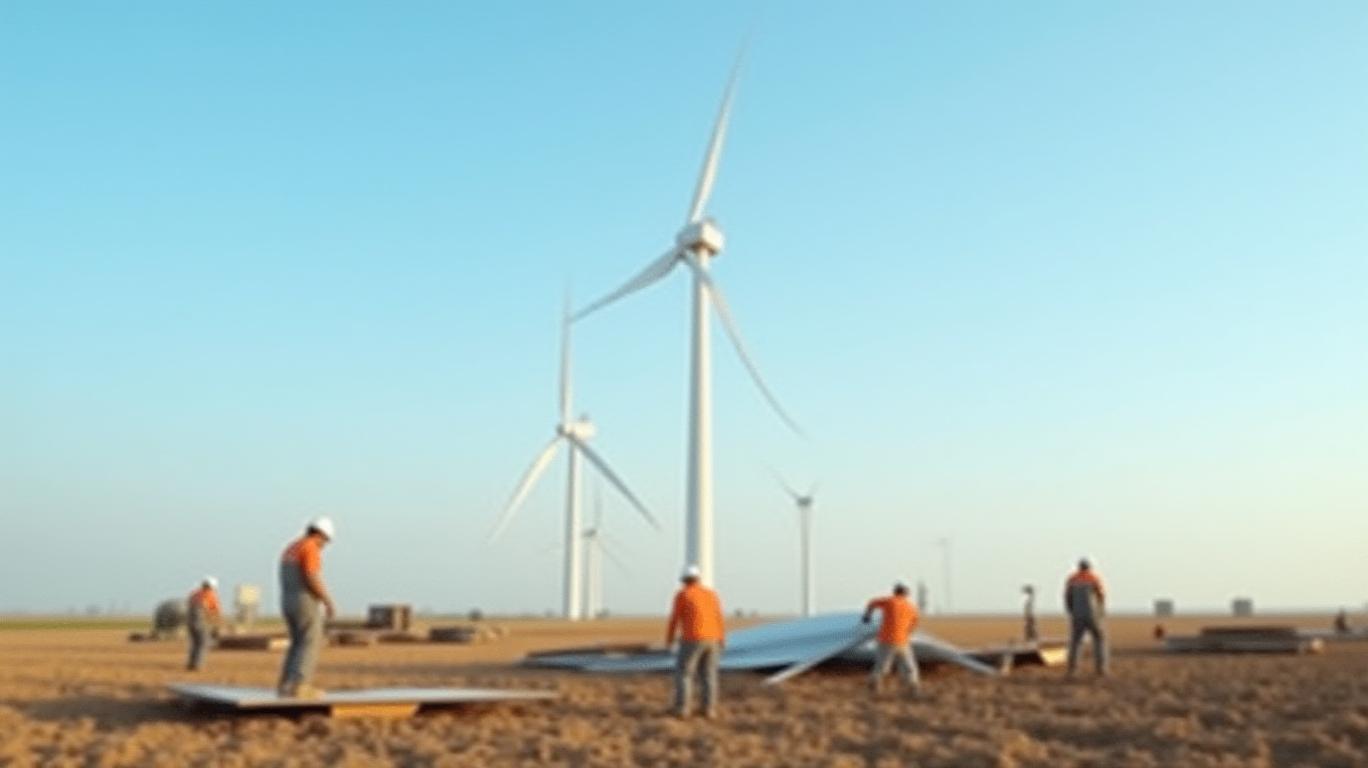TPI Composites: Can Renewable Growth Outpace Operational Struggles?
TPI Composites (NASDAQ: TPIC) has long been a bellwether for the wind energy sector, but its first-quarter 2025 results highlight a stark tension between its sales momentum and persistent operational challenges. While revenue surged 14% year-over-year to $336 million, the company’s net loss narrowed only marginally to $48.3 million, underscoring the difficulty of turning its growth into profitability. As management embarks on a strategic review to address liquidity and capital structure risks, investors must weigh whether TPI’s position in a booming renewable energy market justifies its speculative profile.

Sales Growth: A Bullish Signal in a Growing Market
TPI’s Q1 results reflect tailwinds from the global shift to renewable energy. Wind blade production rose 4%, and average selling prices jumped 14% to $209,000 per blade—a clear win for pricing power. The company’s ability to secure higher prices, alongside improved factory utilization (70% vs. 67% in Q1 2024), suggests demand remains robust. Full-year revenue guidance of $1.4–1.5 billion remains intact, implying TPI is on track to capitalize on long-term contracts with major OEMs like GE Renewable Energy and Vestas.
The bull case hinges on the notion that TPI’s role as a critical supplier to wind energy giants positions it to benefit from the Biden administration’s Inflation Reduction Act subsidies, global decarbonization mandates, and the ongoing push for grid-scale renewable infrastructure. With the wind market projected to grow at a 7% CAGR through 2030, TPI’s technical expertise in blade manufacturing could translate into sustained revenue gains.
Operational Struggles: Margins Lag, Costs Rise
Yet TPI’s operational metrics tell a cautionary tale. Despite narrowing net losses, adjusted EBITDA remained in negative territory at -3.1%, well below the 0–2% guidance for 2025. The company cited rising labor costs in Mexico and Türkiye, warranty expenses, and the financial strain of ramping up 24/7 production at its Mexico facility. Gross losses halved year-over-year, but general and administrative expenses remain elevated, and liquidity remains a concern.
The strategic review—focused on optimizing capital structure—hints at management’s urgency to address these issues. While a refinancing or asset sale could stabilize cash flows, there’s no guarantee of success. TPI’s net cash from operations improved by $43.6 million year-over-year, but its stock’s 54% decline YTD (vs. the S&P 500’s -3.8%) signals investor skepticism about its ability to execute.
The Strategic Crossroads: Turnaround or Write-Off?
The company’s fate hinges on two variables: its ability to control costs and its success in the strategic review. On the former, TPI has made progress—reducing capital expenditures to $25–30 million for 2025 and improving factory utilization. However, wage inflation and warranty costs loom large, especially as it scales 24/7 production. On the latter, a capital structure overhaul could reduce debt or secure new equity, but any solution must balance near-term liquidity needs with long-term growth.
TPI’s partnership ecosystem—critical to its OEM relationships—adds to its speculative appeal. The wind energy supply chain is consolidating, and TPI’s deep ties to industry leaders could provide a moat against rivals. Yet without EBITDA margins turning positive, even these advantages may not be enough to satisfy creditors or investors.
Investment Thesis: Risky, but Rewarding?
The case for TPI as a speculative buy rests on a bet that its wind blade dominance and industry tailwinds will eventually overpower its operational inefficiencies. A successful strategic review could unlock liquidity, while rising demand for larger, more efficient blades (which TPI manufactures) could boost margins.
The bear case, however, warns that TPI’s execution risks are too great. With EBITDA margins still negative and a history of volatile earnings, the company may struggle to survive a prolonged downturn in wind energy investment or a surge in input costs. The lowered 2025 EBITDA guidance itself signals caution, and the stock’s sharp decline suggests investors are already pricing in a worst-case scenario.
Verdict: A High-Risk, High-Reward Speculation
TPI Composites is a classic “turnaround play”—a company with clear growth drivers but significant execution risks. While its role in the wind supply chain is irreplaceable, profitability remains elusive, and the strategic review’s outcome is uncertain. For risk-tolerant investors willing to bet on renewable energy’s long-term growth, TPI’s current valuation (with a market cap of ~$400 million) could offer asymmetric upside. But for most, the risks—geopolitical, operational, and financial—outweigh the potential rewards.
Action: Consider a small speculative position if the stock dips further, but keep a close eye on the strategic review’s progress and Q2 EBITDA trends. TPI’s future is tied to its ability to transform cost discipline into sustained profitability—a goal that remains both achievable and perilously distant.

Comments
No comments yet